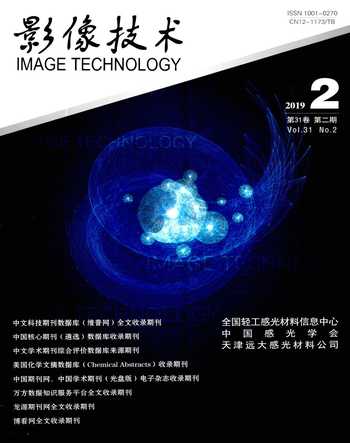乳腺非肿块型病变的超声临床分析
余巧英

关键词:乳腺非肿块型病变;超声反应;临床价值
中图分类号:R445.1;R737.9 文献标识码:B DOI:10?郾3969/j.issn.1001-0270.2019.02.10
Abstract: Objective: To evaluate the ultrasound reaction of breast non-mass lesions. Methods: Using retrospective analysis to analyze the total 50 patients who were diagnosed by routine examination from January 2018 to December 2018. Results: Among the 20 cases of non-mass breast lesions, 11 were malignant lesions(55%) and 9 were benign lesions(45%). Among them, 3 cases were invasive ductal carcinoma, 4 cases were intraductal carcinoma, 3 cases were lymphatic metastatic carcinoma, 1 case was fibrotic adenocarcinoma, 2 cases were lymphocytic leukemia, 2 cases were hyperplasia, 4 cases were adenopathy, and 1 case was inflammatory lesions. Among the 20 cases of non-mass breast lesions, 12 cases were lamellar hypoacoustic region(60%)and 8 cases were microcalcified schistose hypoechoic region(40%). The maximum diameter of lesions in the malignant group was 2.25±1.03(cm), and that was 3.09±1.02(cm) in the benign group; the proportion of microcalcification in the benign group was 77.8% and that in the malignant group was 27.3%. Abnormal axillary lymph node analysis, benign lesions was 9.1%, malignant lesions was 55.5%. Conclusion: The microcalcification in breast non-mass lesions has significant value in the diagnosis of intraductal carcinoma. The presence of axillary lymph node abnormality is useful in the differential diagnosis of benign and malignant lesions.
Key Words: Breast Non-mass Lesions; Ultrasound Reaction; Clinical Value
1 临床数据和方法
1.1 基本资料
对我院于2018年1月-2018年12月期间,所收治的经常规确诊的患者共20例予以分析,20例患者中,最大年龄81岁,最小年龄37岁,中位年龄(52.7±25.8)岁。
1.2 方法
患者保持仰卧位或者侧卧位,采用超声检查的形式对乳腺病灶位置进行测量。
1.3 统计学分析
本次研究的所有数据均行SPSS17.0软件处理。
2 结果
2.1 肿块型乳腺病变反应分析
20例非肿块型乳腺病变反应中,恶性病变11例(55%),良性病变9例(45%)。其中3例为浸润性导管癌、4例为导管内癌、淋巴转移性低分化癌3例、纤维性腺癌1例、淋巴细胞性白血病2例、增生2例、腺病4例、炎性病变1例。
20例非肿块型乳腺病变中,12例为片状低回声区域(60%),8例为微钙化片状低回声区域(40%)。
2.2 恶性组和非恶性病变超声反應对比
恶性组和非恶性病变超声反应对比:恶性组和非恶性组病灶最大直径统计学意义存在,微钙化比例分析不存在差异性(P>0.05),详情见表1。
3 讨论
在对乳腺癌患者进行诊断的过程中,通过检查形式将其分成非肿块型病变以及肿块型病变,超声较为显著的特点是肿块型病变,但是病变位置的部分结构模糊不清楚,因此漏诊情况极易发生[1-3]。
综上所述,在当前超声设备不断发展的过程中,图像分辨率也逐渐清晰,乳腺内多数肿块病变可以测定出来[4]。肿块型是最为典型的超声反应,但是一部分乳腺癌病变出现弥漫反应,所以,对微钙化的出现需要高度注意。在高频超声不断应用的过程中,可出现数量越来越多的非肿块型超声病变。但是在对腋下是否出现异常淋巴结状态时,仍然需要影像学方法进行诊断和判别[5,6]。
参考文献:
[ 1 ]范宾.乳腺区段切除治疗乳腺良性肿块的临床应用[J].中国医药指南,2016,14(36):66-66.
[ 2 ]赵永生.改良乳腺区段切除术治疗乳腺良性肿块的临床疗效分析[J].中国医药指南,2017,15(4):66-67.
[ 3 ]李晔,王知力.非肿块型乳腺病变的超声诊断[J].解放军医学院学报,2015,36(9):957-959.
[ 4 ]陶斯翠,谈雯,王娜等.乳腺非肿块型病变的超声临床探讨[J].中国继续医学教育,2016,8(13):64-65.
[ 5 ]吴晓燕.乳腺非肿块型病变的超声诊断[J].中国现代药物应用,2015,9(13):80-80.
[ 6 ]冯聪.乳腺非肿块型病变的超声诊断分析[J].中国卫生标准管理,2017,8(3):125-126.

